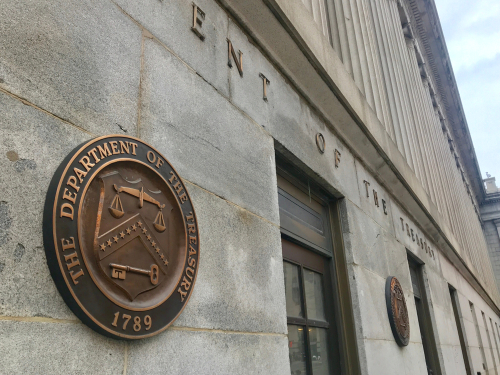The U.S. Treasury Department issued the 2023 De-risking Strategy, which examines how financial institutions are de-risking and why.

De-risking occurs when financial institutions terminate or restrict business relationships with broad categories of customers rather than analyzing and managing the risk of those customers.
The Treasury report said de-risking undermines several key U.S. government policy objectives. Specifically, it takes financial activity out of the regulated financial system, hampers remittances, prevents low- and middle-income segments of the population from efficiently accessing the financial system, and prevents the transfer of humanitarian aid and disaster relief.
This strategy reflects the Biden-Harris Administration’s priority to shape a safer, more transparent, and more accessible financial system while at the same time maintaining a robust framework to protect the U.S. financial system from illicit actors and bolstering national security. Overall, the Biden administration prioritizes addressing de-risking, as it not only hurts certain communities but can pose a national security risk by driving financial activity outside of regulated channels.
“Broad access to well-regulated financial services is in the interest of the United States,” Deputy Secretary Wally Adeyemo said. “This strategy represents the next step in Treasury’s longstanding commitment to combatting de-risking and highlights the importance of financial institutions assessing and managing risk. The policy recommendations in this strategy constitute the strongest measures Treasury has proposed on de-risking to date, reflecting the importance of this issue for the Biden-Harris Administration.”
This report by the Treasury was mandated by Congress in the Anti-Money Laundering Act of 2020. Addressing de-risking is critical to making the U.S. Anti-Money Laundering/Countering the Financing of Terrorism (AML/CFT) framework effective.
The report found that profitability is the primary factor in financial institutions’ de-risking decisions. The strategy also highlights that profitability is influenced by a range of factors, such as a financial institution’s available resources and the cost of implementing AML/CFT compliance measures and systems. Other factors include reputational risk, financial institution risk appetite, a perceived lack of clarity regarding regulatory expectations, and regulatory burdens.
Among those organizations that face the most challenges in de-risking are small and medium-sized money service businesses (MSBs) that offer money transmitting services; non-profit organizations (NPOs) operating abroad in high-risk jurisdictions; and foreign financial institutions with low correspondent banking transaction volumes, particularly those in locales that have high AML/CFT risks.
In addition, the strategy provides several recommendations on how to promote consistent regulatory expectations, provide better incentives to U.S. banks to avoid de-risking and advance public and private engagement at home and abroad.
The Treasury strategy report said these policy options offer the potential for a positive impact that outweighs the assessed risk. They also leverage Treasury’s relevant policy tools and authorities. While no one recommendation is likely to be transformative on its own, the recommendations should have positive cumulative effects on the issue of de-risking. The full list of recommendations can be viewed at Treasury.gov.
In the coming weeks and months, Treasury will be contacting partners in the public and private sectors to coordinate the best path forward to implement the recommendations in the strategy.